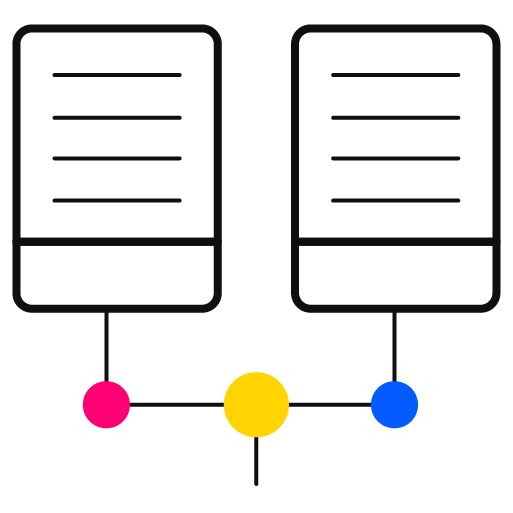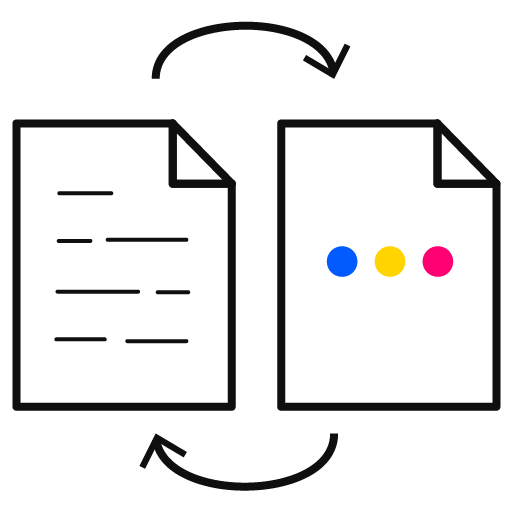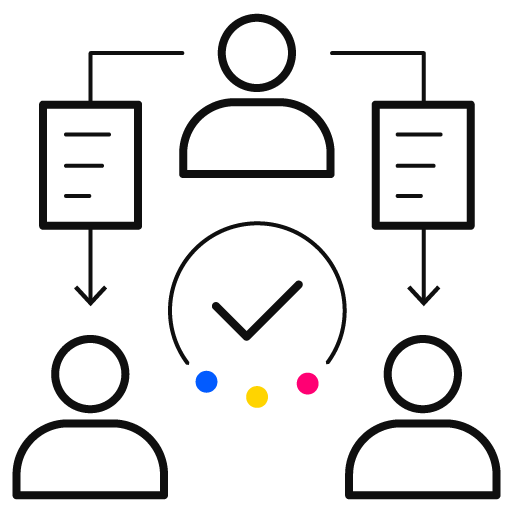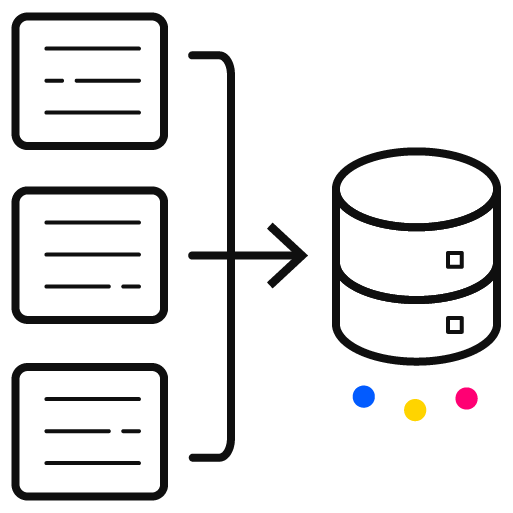Industry Knowledge
How to Outsource Data Entry Services: Prices, Types, and Best Practices
Realize cost savings and increase bandwidth by outsourcing data entry services.
Data entry tasks are essential to the daily operation and strategic development of many companies. By feeding information into systems, enterprises can glean valuable insights from their datasets and refine their decision-making processes. However, as the quantity of data continues to grow in the digital age, inputting data has become more labor-intensive and resource-heavy.
Therefore, businesses have realized it is more viable and efficient to outsource menial or repetitive tasks, and let their in-house staff focus on strategy and growth. By outsourcing this function to business process outsourcing (BPO) companies, organizations can free up their workforce and resources for other strategic and high-priority areas. The advantages of outsourcing are plentiful, including substantial cost reductions, better data management, amplified scalability, and uninterrupted operations.
In this article, we’ll explain why more organizations worldwide turn to data entry outsourcing and how it can deliver growth for your business.
What is Data Entry?
Data entry is the process of entering data into a computer system, usually in a structured format like a database or a spreadsheet. This information could range from financial transactions and customer details to sales reports and medical records, encompassing various industry niches.
As simple as it might sound, it is no easy task. It is a job that requires skilled professionals, stringent processes, attention to detail, and advanced tools to ensure quality. With clean, organized, and usable data, organizations can fully support their daily operations, strategic decision-making, predictive analysis, and business intelligence.
Types of Data Entry
Tasks vary widely across industries, from simple text entries to more complex data.

Online Data: This task involves transcribing data directly into web-based systems and online platforms. It is best suited for businesses that manage real-time information or need constant database updates. Examples include inputting client information into customer relationship management systems, updating e-commerce product listings, and filling out online forms.

Offline Data: Also referred to as document digitization, this service transforms physical or printed information into a digitized format for entry into digital databases. It allows businesses to transition from physical to electronic record keeping for improved accessibility, better management, and reduced storage costs. Some use cases under this category include digitizing property tax records and court proceedings, cataloging museum artifact data, and uploading academic records. It is often preferred by companies and organizations with sensitive client data and don’t want to risk exposing it to bad actors on the internet.

Image Data: This process involves converting necessary data from images into a usable format, ideal for businesses dealing with a high volume of image-based data. For example, insurance companies employ this service to streamline claim processing and decision-making.

Survey Data: This involves transcribing extensive raw data from surveys or questionnaires into a database system for analysis and interpretation.

Data Conversion: Data conversion deals with reformatting data from one format to another, from PDF to Word, Excel, or PowerPoint, without compromising its integrity. This is a common need for businesses such as financial institutions or research firms that need to adapt complex data for various purposes. Professionals can convert financial data into various graphical presentations through this service to make information more understandable to stakeholders.
Why Outsource
The strategic outsourcing of data entry tasks has become popular because of its potential to transform operations. It's not limited to established corporations but also allows startups to concentrate more on their core strengths. By letting an outsourcing partner handle the hiring, training, and managing teammates to handle menial tasks, company leaders can focus more on high-growth projects and strategies.
Put briefly, here are the top reasons to consider outsourcing:

Cost-Efficiency: Outsourcing can help you avoid the expenses of hiring, training, and maintaining an in-house team.

Focus on Core Activities: Outsourcing this non-core task can enable you to dedicate more time and resources to primary activities such as customer relations and product development.

Access to Expertise: BPOs employ a team of professionals who specialize in outsourcing services in your industry, saving your company time and money in HR recruitment and training.

State-of-the-Art Tools & Technology: BPO teams can access advanced techniques and software to ensure accurate and efficient data management.

Quality Assurance: Reputable outsourcing providers utilize stringent quality control processes to keep the quality of their work high.

Scalability and Flexibility: With an outsourcing partner, you can easily increase or decrease the outsourced workload based on fluctuating needs.

24/7 Operations: Outsourcing companies can operate around the clock, allowing quicker turnaround times and continuous support.
Deciding to outsource data entry is more than just a strategic option. It is a significant push toward business growth and success in the intensely competitive and increasingly data-driven corporate world.
How to Outsource Data Entry Work
Outsourcing data entry services becomes easier when you follow a structured approach. Still unsure where to start? Follow our eight-step guide to start your outsourcing journey.
- Identify Your Requirements: Conduct an extensive internal audit to define the exact information entry tasks your business needs to outsource. Consider the volume of these tasks, the urgency, the complexity of your data, the specialized skills needed, and the data security measures required.
- Develop a Statement of Work: Write a statement of work (SOW) detailing your outsourcing needs after your initial audit. You should specify the duties you want from a BPO company, the expected completion time for the tasks, the necessary deliverables, and the data accuracy and security level needed.
- Draft a Request for Proposals: Prepare a request for proposals (RFP) that will explain your needs and expectations based on your SOW. It should ask potential outsourcing partners how they intend to meet your SOW, their technological capabilities, their data security measures, the timelines they can meet, and a clear pricing structure.
- Research Potential Service Providers: Research BPO companies that you will request proposals from. Look into factors critical for your requirements, such as the range and quality of services they offer, their previous performance, their reputation within the industry, and their cost structure. Identify vendors that best align with your needs and expectations and send them RFPs.
- Evaluate Proposals: After receiving responses to your RFPs, carefully examine each proposal. Look at the strategies each BPO company proposed to fulfill the tasks included in the SOW, analyzing how effective and achievable they are. Compare their listed prices, experience related to your project, and the timelines they propose. Through evaluation, you can comprehensively understand each contender’s capabilities. Create a shortlist of vendors that best fit your data-related requirements.
- Close a Deal With Your Preferred Outsourcing Partner: Using all the gathered information, decide which BPO company you prefer to work with. Discuss and sign a formal and legally binding contract that covers the exact services to be provided, the duration of the agreement, payment terms and schedules, and premature termination clauses. A contract will help avoid disputes and protect the interests of both parties.
- Set Up Workflow and Start Work: After finalizing the contract, establish a clear and well-defined workflow for your outsourcing partner to follow. This should detail how tasks will be assigned, how data will be transferred, how often quality checks will occur, and when the processed data will be delivered. An organized workflow will make everyone’s jobs easier and ensure that each step in the process is completed correctly.
It is possible to initiate a small-scale, non-critical pilot with your shortlisted vendors to assess their abilities in a practical and real-world scenario. This test run will give you first-hand experience of each outsourcing provider’s data entry expertise, professionalism, adherence to deadlines, quality of work, and communication style. It will also allow you to check how compatible their operations and performance are with your business.
Do not be mistaken: outsourcing data entry is not a one-time task. It needs your constant supervision to ensure that the result aligns with your business goals. Communicate regularly with your chosen partner and be receptive to changes and modifications to enjoy an efficient and effective outsourcing experience.
Common Workflows
To outsource these services efficiently, you must have a robust and efficient workflow that ensures smooth operations, timely outputs, and high data quality standards.
Follow this workflow to establish a smooth partnership between you and your selected service provider:

Task Assignment: The outsourcing provider will assign tasks to its specialists. Clear communication between you and the provider must ensure the assigned team fully understands your requirements.

Data Input: The team inputs the data into the client’s database.

Quality Check: Your outsourced team’s tasks will undergo rigorous quality checks to guarantee accuracy. These could involve manual checks, automated error reports, validation rules, or double data entry methods where data is entered twice and discrepancies are checked.

Communication and Reporting: You and your outsourcing partner must establish regular, open communication lines to achieve successful outcomes. This can be done through routine progress reports, meetings, or regular feedback sessions.

Review and Evaluation: Once work is complete, review and evaluate the overall process to gain insights, identify areas for improvement, and refine the methodology for future tasks.
Having a well-structured workflow is essential for success. It guides the entire process like a compass, leading you toward a seamless and triumphant outsourcing journey.
Common Pricing Models for Data Entry Outsourcing
To maximize the financial benefits of outsourcing, you must understand how your partner charges for its services. This information will help you plan and eliminate hidden costs down the line. Here are some standard pricing models you might encounter when you outsource data entry services:
- Hourly/Productive Minute Rate: In this model, you will pay for each hour or productive minute of work provided by your outsourcing provider. This flexible structure suits projects where the workload may vary from time to time.
- Full-Time Equivalent (FTE) Rate: The FTE structure will charge you for the services of a full-time employee managed by your outsourcing partner. Businesses prefer this model to secure a dedicated outsourcing team for tasks supporting their long-term projects.
- Transaction-Based Model: This model bases its pricing on completed transactions or tasks. The best use cases for this model include services that can quantify outputs comfortably, such as the number of processed forms or entered records.
- Shared Services Model: Under this structure, you will share outsourcing resources and capacities for your tasks with other businesses. This results in distributed costs, improving the price per individual client and the utility and efficiency of resources.
The standard pricing models are crucial for effective budget planning and cost optimization. To find a suitable pricing model, you must consider your project size, task complexity, and budget constraints, among other factors.
Start Your Journey to Outsource Data Entry

The best way to start is to partner with a reputable BPO that delivers quality data entry work by combining highly skilled humans and cutting-edge technology. With the right partner, you can be confident that your information requirements will be handled efficiently and effectively, leaving you to focus on growing your business.
References

We exist to empower people to deliver Ridiculously Good innovation to the world’s best companies.
Useful Links







